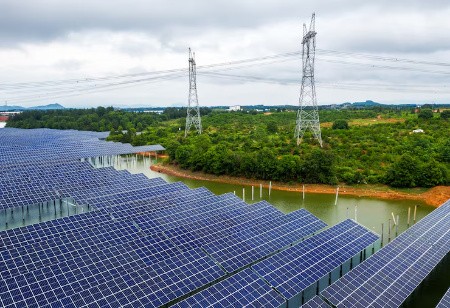
The Delhi government has made a giant step towards the sustainable development of urban centers by turning the polluted Najafgarh Drain into 30 MW canal-top solar power corridor. The initiative shows that this project is a major milestone to increase the renewable energy capacity and the water conservation within the capital city.
The initial round of the project that covers 6 km area between Dhansa Border and Ghummanhera will produce 5 MW of solar energy. The solar panels being erected over the canal will be able to generate electricity in addition to making a saving of about 270 million litres of water, per annum, by cutting back on the process of evaporation during the course of generating electricity, according to the officials.
This is the third stage of Delhi clean energy strategy that involves tripling the solar power capacity by 2027. The scheme was created during Public-Private Partnership (PPP) and soon, it can be copied to other big water bodies, such as Barapullah and Agra Canals.
This also fits efforts of the city of Delhi to clean up Yamuna River, where desiltation and prevention of pollution are already undertaken. “The government is also installing 32 real-time water monitoring stations—10 on the Yamuna and 22 on major drains,” a senior official confirmed.
Also Read: Assam Gas Leak: ONGC to Rely on U.S. Expert to Plug Well Leak
Meanwhile, Delhi cabinet has enhanced the solar subsidies where the 3KW solar panel now earns a subsidy of 108,000 compared to 108,000 central subsidy. The Delhi Vidhan Sabha is also the first building across India to be.(Having) the 500 KW solar plant. These changes signify the increased eagerness of Delhi to become a leader in the field of clean energy in India.
We use cookies to ensure you get the best experience on our website. Read more...